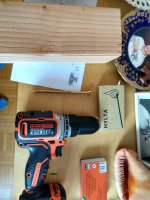kiwifiat
100 W
@kiwifiat Sorry if this a question with an obvious answer.
In this thread I see a newer version of the Lebowski board you designed that looks to be designed to drop directly onto the standoffs of the IMA inverter.
looking through other threads the best I have been able to find is the small Bobc board style. Not the one like is used in this thread.
The board has support for the resolver fitted to the HSG, just connect and tune. The board gerbers haven't been released yet as there is a revision in the works that makes connecting to the outside world less of a hassle. The current design is meant to connect to the existing oem 20 pin socket, seemed like a good idea at the time, but it is ridiculously time consuming.



